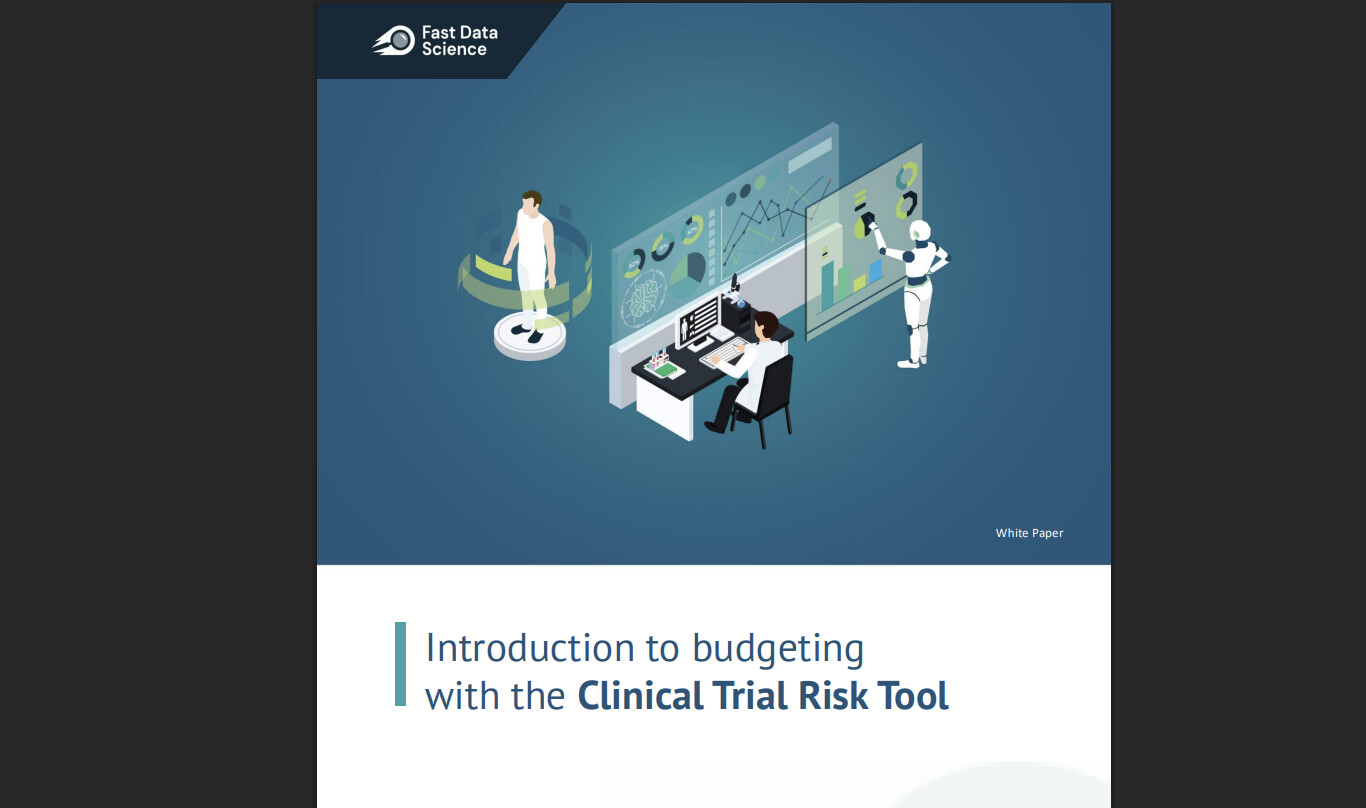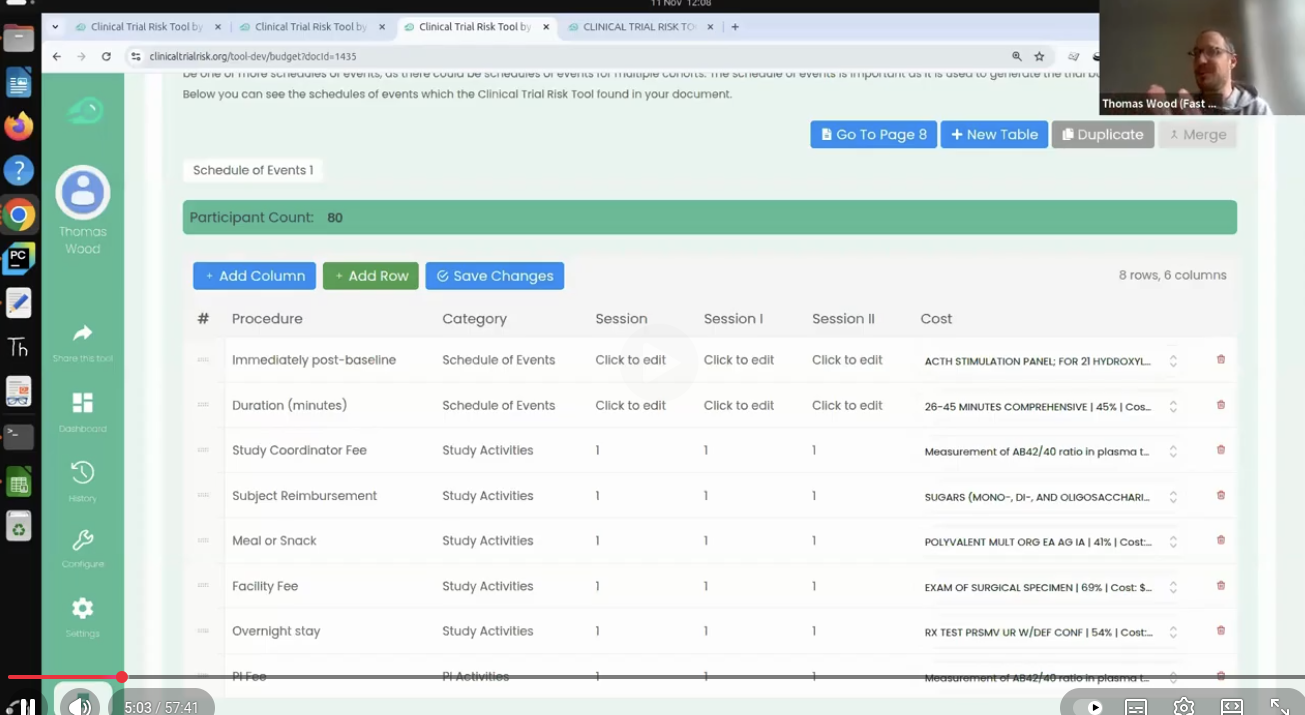
Are you wondering how you can build a detailed clinical trial budget from the protocol, whether for a site, CRO, or sponsor?
This may appear an intimidating task. You have to read the protocol carefully, find the schedule of events, calculate how many times each activity occurs during the trial, and slowly create an itemised budget spreadsheet. There are cost items buried in footnotes that you need to look for.
The documents that you will need to review include
Upload your clinical trial protocol and create a budget with AI
The Clinical Trial Risk Tool provides a solution. You can upload the protocol or synopsis and it will generate an itemised spreadsheet from the schedule of events, showing the fixed and per-subject costs in different sheets. It will even create separate sheets per site for multi-site trials.
You can find out more in our white paper.

Thomas Wood presents the Clinical Trial Risk Tool at the Clinical AI Interest Group at Alan Turing Institute The Clinical AI Interest group is a community of health professionals from a broad range of backgrounds with an interest in Clinical AI, organised by the Alan Turing Institute. In the group’s November 2025 meeting, the talk was given by Dr Jeff Hogg, Programme Director, MSc AI Implementation (Healthcare), University of Birmingham and Clinical Innovation Officer in AI, University Hospitals Birmingham NHSFT, titled AI Readiness for Health and Care Provider Organisations.

Guest post by Safeer Khan, Lecturer at Department of Pharmaceutical Sciences, Government College University, Lahore, Pakistan Multi-Arm & Multi-Stage (MAMS) Clinical Trials Design Tips The design of clinical trials is increasingly challenged by the Rising Costs, limited availability of eligible patient populations, and the growing demand for timely therapeutic evaluation. Traditional parallel-group designs, which typically compare a single intervention to a control, are often insufficient to meet these pressures in terms of speed, efficiency, and resource utilization.

You can use the t-test when you want to compare the means (averages) of continuous data between two groups, such as blood pressure or maximum concentration of a drug in urine (Cmax). If you have data with a dichotomous outcome, you can use the Chi-Squared test instead - please try our Chi-Squared sample size calculator. The calculator below will calculate the minimum sample size for you. Your expected effect size d is the standardised effect size according to Cohen’s definition.